PATRONAGE & PLUMS, No. 398 HENRY ST (1895)
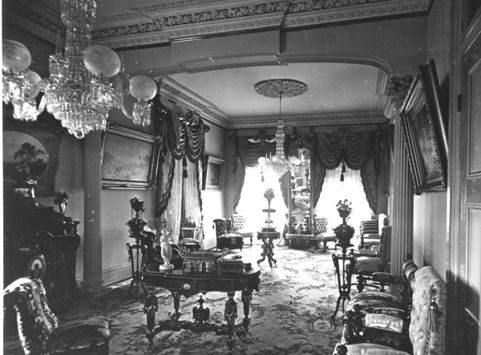
********************************************************************************************************************************Brownstone Detectives investigates the history of our clients’ homes.The story you are about to read was composed from research conducted in the course of one of those investigations.Do you know the history of YOUR house?******************************************************************************************************************************** “The house is a three-story and basement structure. As it is now, the basement is transformed into a pool and billiard room, and from the cellar to the roof the premises are heated. The parlor, of course, comprise the second floor. There is an expanse of Brussels carpet which covers the entire space; in the rear parlor is a business desk, and in the front of it the president’s seat, for the parlors comprise the meeting room of the association and from four to five hundred people can easily be accommodated. Specials chairs are provided when a meeting is to be held, but on other occasions the members are allowed to utilize the furniture for their own comfort. There is not an upholstered chair on this floor which is not an easy one; there is not a lounge or sofa which is not inviting. The walls are papered tastefully, the oil paintings which hand upon them are masterpieces of art and good judgment. The ornamental fireplaces are surmounted with open cabinet work, in the sections of which are enshrined choice bric-a-brac. “Between the front parlor windows hangs the picture of the ward leader, ex-Register James Kane. On the southern wall is the crayon resemblance of Peter Fagan, one of Mr. Kane’s closest friends, and who […]
THE NIMBY FENCES OF COBBLE HILL (1900)
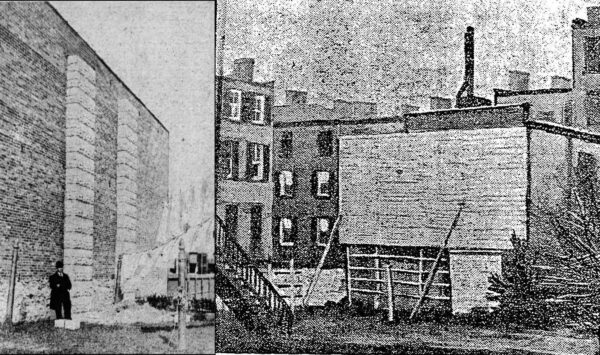
******************************************************************************************************************************** Brownstone Detectives investigates the history of our clients’ homes. The story you are about to read was composed from research conducted in the course of one of those investigations. Do you know the history of YOUR house? ******************************************************************************************************************************** “Good fences makes good neighbors.” So goes the line in Robert Frost’s poem, “Mending Wall,” which refers to the barriers people put up between themselves and others. It was also a saying favored by flinty new England farmers who thought it wise to keep their cows from straying into neighbors’ yards. When those fences ran higher than 10 feet and blocked their neighbor’s light and air, however, they tended to generate the opposite reaction – hostility. EXCHANGING HORSE NEIGHBORS FOR PEOPLE NEIGHBORS In the 19th century, Cobble Hill’s Verandah Place was a well-kept private alley within which the owners of the “mansions” on Congress and Warren Streets maintained carriage houses. When public transportation improved in the city, those horses became redundant for some. Thus, these carriage houses began to be sold to investors who, in turn, converted them, one by one, into “tenement houses.” Soon afterwards, however, the owners of these luxurious mansions abutting this alley no longer experienced the peaceful and rustic sound of the neighing of horses. They were now confronted with “squalid” tenements that attracted “far from choice” tenants. Thus, a class war had begun and those with the most means were, characteristically, intent on winning it. Faced with this new reality, the mansion owners felt that they […]
THE PAINTED LADY OF SACKETT STREET (1958)
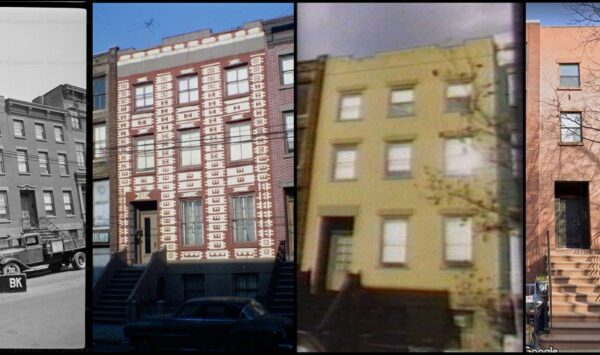
******************************************************************************************************************************** Brownstone Detectives investigates the history of our clients’ homes. The story you are about to read was composed from research conducted in the course of one of those investigations. Do you know the history of YOUR house? ******************************************************************************************************************************** Houses as old as the historic brownstones of New York City have had a lot of time to experience change – change of ownership, change of status, as well as physical change. Much of that change often occurs on the inside of these buildings as their occupancy type changes. The most prevalent change of this type that occurs over time is the change of a property from a single family house to a mutiple dwelling or boarding house. Just outside the Cobble Hill Historic District, sits a much-altered brownstone on Sackett Street between Court and Clinton Streets, No. 275. Constructed pre-1855 as a one-family house it would experience many change over the years. Its original address was No. 160. Its original owner appears to have been William H Perry, a stock broker on Wall Street. By the 1860s, the Forsyth family lived in the Sackett Street rowhouse. Orlando Forsyth was a jeweler who, in the 1840s, had had a showroom on Fulton Street at No. 99. The house would begin taking boarders in the 1870s, continuing at least through most of the 20th century. THE LADY GETS A FACELIFT At face, however, the physical changes of No. 275 seem to be the most striking. While, in its original state, it resembled […]
RESCUE OPERATION ON “BOERUM HILL” (1964)
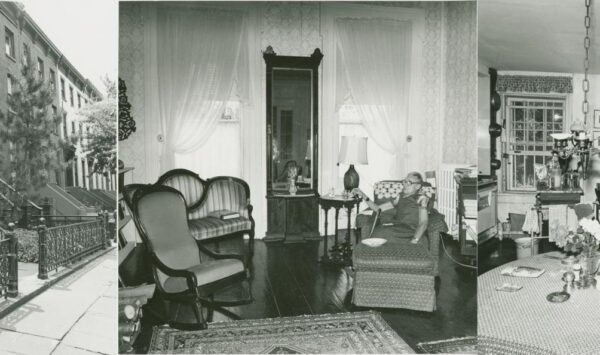
******************************************************************************************************************************** Brownstone Detectives investigates the history of our clients’ homes. The story you are about to read was composed from research conducted in the course of one of those investigations. Do you know the history of YOUR house? ******************************************************************************************************************************** Most Boerum Hill residents do not know the name Helen Buckler – but they should. While she wasn’t instrumental in building Boerum Hill, she was the reason it got its name. She also started the organization that ushered in the wave of brownstoners and brownstoning in the area, the Boerum Hill Association. Brownstoning – or the renovation of brownstones back to their former glory – is not a recent trend. Like many other movements, brownstoning appeared in parts of New York City in waves as good/bad economic times ebbed and flowed, neighborhoods fell in and out of fashion, and young professionals, who were usually the harbingers of those waves, “discovered” New York City’s 19th century brownstones. One of those waves washed over Brooklyn in the early 1960s. Helen Buckler rode, from her Dean Street brownstone, firmly atop the crest of that era’s wave. She named it Boerum Hill. BOERUM HILL BEGINS A few years after Buckler bought No. 238 Dean Street, she started the Boerum Hill Association. Then, already at the age of 70, she was no ordinary brownstoner. Her enthusiasm attracted to the organization approximately 20 like-minded families who were also interested in renovating their brownstones in the area. The purpose of the organization was to improve the community and […]
WHICH LANDMARKS TO DEMOLISH? (1913)
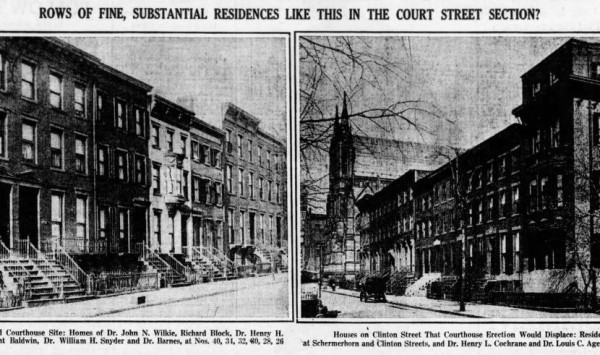
******************************************************************************************************************************** Brownstone Detectives investigates the history of our clients’ homes. The story you are about to read was composed from research conducted in the course of one of those investigations. Do you know the history of YOUR house? ******************************************************************************************************************************** In 1913, Brooklyn was looking to tear down long rows of stately brownstones. These brownstones were “substantial residences” in the “Court Street Section” comprising Nos. 24 to 40 Schermerhorn Street and Nos. 141 to 137 Clinton Street. The owners of these homes, upon discovering that their residences were in the path of the newest Brooklyn courthouse, were, understandably, up in arms. Eminent Domain or no, they were having none of it, and they started a campaign to force the city to locate a building site more suitable. Apparently, these men got to the Brooklyn Daily Eagle, which published this spread showing their houses – along with their names (5 out of the 7 of whom were doctors) – and compared their residences (favorably, of course) to an alternative site that they had seclected comprised of “several blocks of lodging houses, dance halls and the like in the Bridge Plaza District,” asking the question: “WHICH SITE CAN BE BETTER SPARED FOR A COURT HOUSE?” Playing upon the morals of the people of Brooklyn, it would be clear which site would meet the wrecking ball when, the following day, an assemblyman from Brooklyn by the name of Burr announced that the New York State Assembly would soon adopt his bill “taking from the […]
A GANGLAND SLAYING AT 162 COURT (1922)
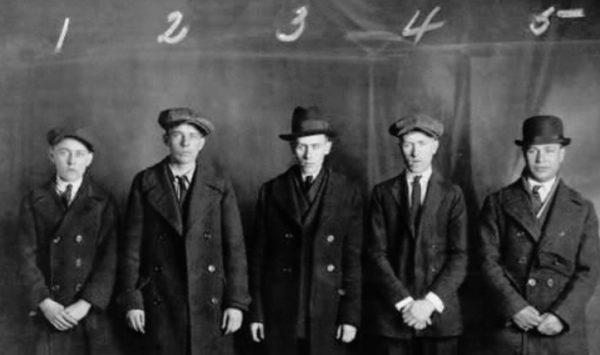
******************************************************************************************************************************** Brownstone Detectives investigates the history of our clients’ homes. The story you are about to read was composed from research conducted in the course of one of those investigations. Do you know the history of YOUR house? ******************************************************************************************************************************** Above: The “Navy Yard Gang,” (l to r), (1) Stephen Collins, (2) John Keogh, (3) William Evans, (4) Frank Evans, and (5) Pellegrino Mucci On a frigid February evening in 1922, three young men stepped into the dimly lighted drugstore at No. 162 Court street in Cobble Hill. Druggist Paul J. Gillman, looking up from behind his counter, suspected something was up – the men, who seemed to be barely out of their teens, moved with a sense of purposelessness filled with less-than-good intentions. Gillman noticed as the first young man, who stood by the case in front of his prescription counter, pulled something from his coat and then began to walk towards the passageway leading to the place behind the counter where Gillman stood. “I just stood at the entrance and pointed the gun at him,” the gunman, William Evans, 23, of No. 24 Fort Greene Place, later explained to the police. “I told him to put his hands up.” The night, which was planned to be spent on a simple hold-up, would not turn out as the members of the “Navy Yard Gang” had expected, however, as Gillman would not be encouraged by what he certainly thought were young boys attempting to get away with a prank. Gillman, not […]
SHE MASQUERADED IN MALE ATTIRE (1894)
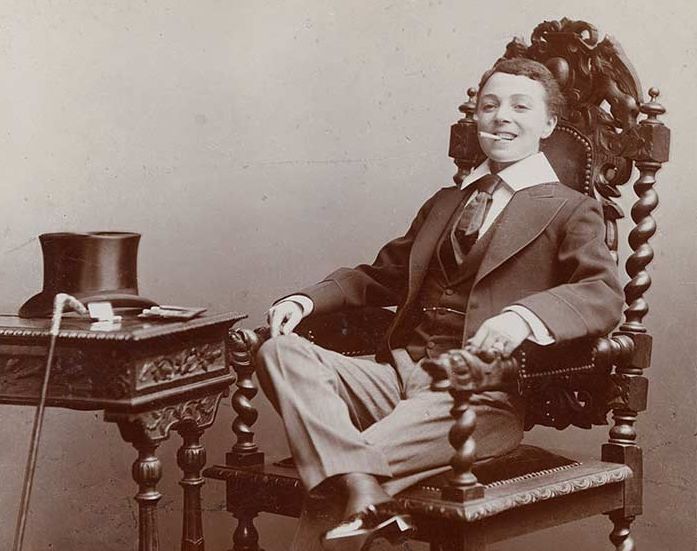
******************************************************************************************************************************** Brownstone Detectives investigates the history of our clients’ homes. The story you are about to read was composed from research conducted in the course of one of those investigations. Do you know the history of YOUR house? ******************************************************************************************************************************** Poor Mrs. Emily Lund. She was not prone to wearing men’s clothing – at least not in public. But the night in 1894 that she did dress so, she was arrested and tossed in the slammer. Officer Michael Quinn of the Hamilton Avenue police station arrested Lund, on Van Brunt, in Red Hook (or “South Brooklyn”) near William. The 55-year-old domestic had been discovered there attired “in a pair of trousers, a vest and a long mackintosh.” THE NIGHT IN JAIL After spending the night in jail, she was arraigned in the Butler street police court the next day. Her husband, who could not bring himself to even show his face, had his mother appear in his place. She brought “an outfit of women’s clothing” for his wife. When “Emily could make no coherent reply to Justice Tighe’s questions as to why she masqueraded in male attire,” Mrs. Lund’s mother-in-law told the court that her daughter-in-law’s “mind was affected.” POSTSCRIPT: “WHAT HAPPENED TO EMILY?” OR “THE POWER OF PUBLIC SHAMING” Whether that was the truth or Emily’s mother-in-law simply found the explanation convenient and a good cover up of the actual truth, it is not known. What we can guess, though, is that the Lund family was probably the butt of […]